The Last Jedi’s Unexpected Star Wars Story Structure
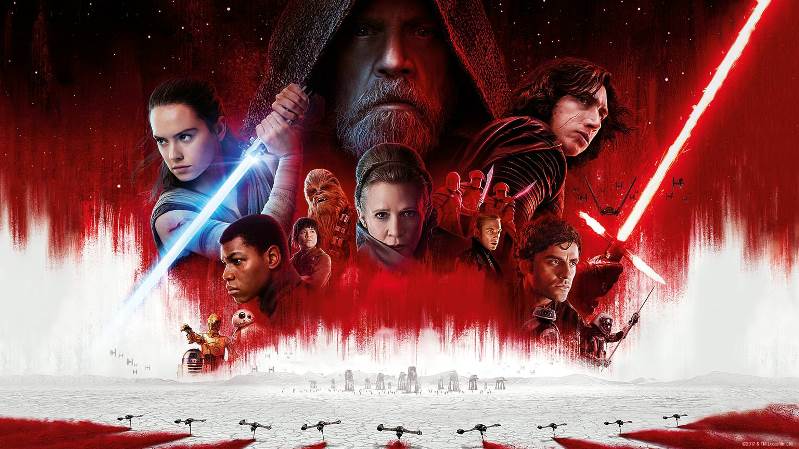
Like the Star Wars movies before it, The Last Jedi undeniably has succeeded in one goal: getting fans and film critics talking about the film. Many have praised it; others have been ambivalent, even harshly negative, especially regarding several key storytelling and characterization decisions made by writer-director Rian Johnson. This wide range of reactions is nothing new for the Star Wars franchise.
Particularly interesting is one aspect of the response of many fans after their first viewing of the movie: a description of The Last Jedi as feeling different from the previous Episodes; a struggle to encapsulate the plot concisely; even a wish that the film had an intermission to give time to start processing the tale along the way. Although these sentiments often fade upon repeat viewings, when the details of the film’s intricate foreshadow-and-payoff dialogue and themes become more recognizable, they arise from the way in which the structure of the story told in The Last Jedi sets it apart from its predecessors. For Star Wars audiences accustomed to the pattern of how the saga films unfold, Episode VIII delivers one more unexpected twist: in terms of structure, it also doesn’t go the way you think.
The Familiar Structure: Episodes I-VII
As discussed in depth in previous posts, the Star Wars saga draws heavily from the Hero’s Journey story structure, including the historically grounded monomyth identified by scholar Joseph Campbell and the contemporary cinematic version developed by screenwriter Christopher Vogler. The tale proceeds in three acts, with the heroes repeatedly challenged on their adventure until they reach the film’s thrilling and climactic conclusion, followed by a brief epilogue. Each of the first seven Episodes, including The Force Awakens, follows this structure.
Act One is the beginning of the adventure. In the trilogy openers, this act focuses on the central protagonist’s Call to Adventure, Refusal of the Call, and ultimate decision to accept Crossing the First Threshold from the ordinary world into the extraordinary world. In A New Hope, Luke sees Leia’s message, turns down Kenobi’s offer of the lightsaber, and then (with an assist from the Empire’s murder of his adoptive family) decides to travel to Alderaan and learn the ways of the Jedi with his new mentor. In The Phantom Menace, Queen Amidala faces an invasion of her planet by the Trade Federation but will not condone a course of action that will lead to war, and then (after the invasion has conquered her world) agrees to travel to Coruscant to plead her case to the Senate. In The Force Awakens, Rey saves BB-8 in the desert and Finn from the First Order at Niima Outpost, but even when the Falcon escapes into space her pledge to return BB-8 to the Resistance base remains hedged with her commitment to return to Jakku afterward.
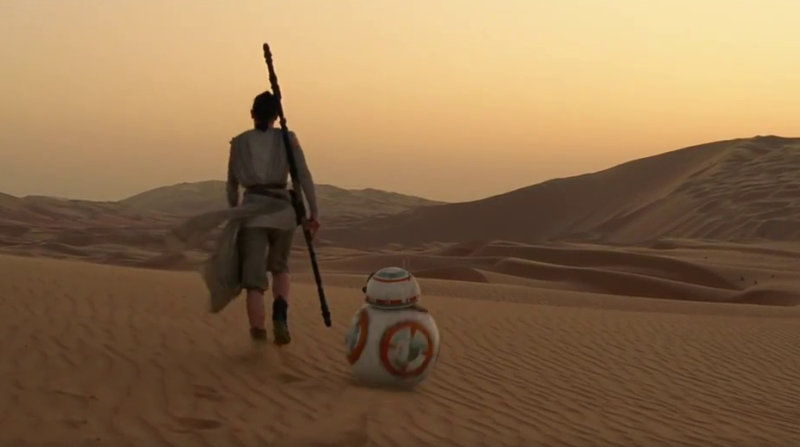
The second and third movies in each trilogy do not follow the monomyth so closely in their first acts, which makes sense because they are in fact forming the middle segment and concluding stage, respectively, of an overarching Hero’s Journey played out over the span of three films. Nevertheless, the basic premise of launching the new adventure in a film’s first act is consistent. The Empire Strikes Back opens on Hoth, leading to the Imperial assault that scatters the Rebellion; Return of the Jedi begins with the mission to rescue Han from Jabba’s Palace before returning to the struggle against the Empire. Attack of the Clones starts with a pair of assassination attempts on Padmé and the assignment of Anakin and Obi-Wan to protect her; Revenge of the Sith showcases the Skywalker-and-Kenobi teamwork in rescuing the Supreme Chancellor from the Separatist fleet over Coruscant.
Act Two is the heart of the story, putting the heroes through an extended phase of Tests, Enemies, and Allies before the central protagonist’s metamorphosis in Approaching the Inmost Cave, followed by an Ordeal and its Reward. For trilogy opening films, this has been a substantial section of the story, in which the protagonist continues to meet new allies and adversaries serially: arrival in Mos Eisley through escape from the Death Star in A New Hope; flight from Naboo through the decision to return to Naboo in The Phantom Menace; the Falcon’s recapture by Han through Rey’s use of the Force to escape her confinement on Starkiller Base in The Force Awakens. Likewise for subsequent Episodes: the Han/Leia and Dagobah storylines (including a literal cave) culminating in Luke’s arrival on Cloud City in Empire; the Anakin/Padmé and Obi-Wan storylines converging for the reunion on Geonosis in Clones; the return to Dagobah and infiltration of the forest moon in Episode VI; Obi-Wan’s pursuit of General Grievous and Anakin’s seduction to the dark side by Palpatine leading to Order 66 and the emergence of Darth Vader in Episode III.

Especially in Vogler’s cinematic structure, Act Three presents an even more precarious challenge for the heroes: though they seek to embark on the Road Back to the ordinary world, they must work together to once more fend off the antagonist in the Climax (or Resurrection). The Rebel attack on the Death Star in A New Hope succeeds with Luke firing the torpedoes, Leia in the command center, Han clearing Vader’s pursuit, and Obi-Wan’s whispered guidance. The liberation of Naboo in The Phantom Menace involves Padmé retaking the palace while Jar Jar and the Gungans battle on the plains, Anakin destroying the droid control ship, and Obi-Wan defeating Darth Maul. The Resistance victory in The Force Awakens entails the detonators placed in the oscillator, Han’s sacrifice in trying to save his son, Poe’s attack on the damaged facility, and Finn then Rey dueling Kylo Ren in the forest. In Empire, Luke is soundly beaten by Vader and the Rebels barely escape Cloud City alive (and without Han); in Clones, Anakin and Obi-Wan fail to stop Dooku and the Jedi fail to stop the start of the Clone Wars. In Episode VI, Luke is proven right about his father in the fateful showdown aboard the second Death Star while the Rebel fleet and ground forces nearly succumb to the Emperor’s trap; in Episode III, Padmé and Obi-Wan confront Vader on Mustafar, and the master only narrowly defeats his fallen apprentice in a vicious duel.
Also following Vogler’s model, the saga films conclude with a short Denouement (or Return with the Elixir) that provides a bit of concluding catharsis for the audience. These moments are easy to identify: the medal ceremony, the medical frigate, and the Ewok celebration in the Original Trilogy; Qui-Gon’s funeral and the Naboo parade, the solemn recognition of the war’s commencement and the secret wedding, and the birth and separation of the twins in the Prequel Trilogy. In The Force Awakens, the return to the Resistance base and the cheering for the departure of the Falcon are the traditional denouement, followed by an additional epilogue showing Rey’s arrival at Ahch-To to meet Luke Skywalker.
Episode VIII in Four Acts
For much of The Last Jedi the story structure feels familiar, if slightly different. At about the two-hour mark, though, the structure takes an unexpected turn. For fans who think they know how Star Wars stories progress, the effect can be disconcerting. The implications of the change for the character arcs in Episode IX and beyond are yet to be seen.
Like Empire and Clones before it, The Last Jedi forgoes the need to rely on a second iteration of a formal Campbellian opening to the adventure. Unlike those movies, which begin with the heroes reunited before separating them, Episode VIII picks up where The Force Awakens left off. Act One of The Last Jedi therefore has two parallel storylines running in tandem.
The film opens with the Resistance under attack by the First Order when the evacuation of D’Qar is interrupted by the enemy fleet. Ignoring orders, Poe carries through with the ill-fated bombing run. Finn awakens in search of Rey, only to quickly learn that the First Order can track the Resistance fleet through hyperspace. Before the quicker Resistance ships can outpace the larger First Order warships, though, Kylo Ren and his wingmates attack the Raddus, grounding Poe and wiping out the Resistance leadership on the bridge. Leia uses the Force to save herself from death in space, passing off the beacon to Finn as she is rushed to the medward.
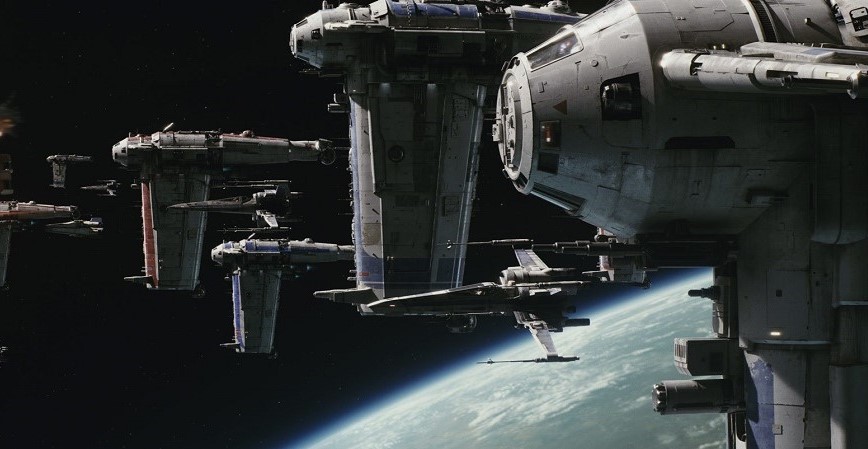
The second storyline in Act One challenges Rey with frustration and loneliness on Ahch-To. Her entreaties to Luke are rejected; even an angry Chewbacca cannot faze him. Yet Rey’s life on Jakku has made her nothing if not patient, and she follows Luke through his routines in acquiring milk and fish for sustenance. The Force calls her to the library in the tree, where Luke finally admits the decision, but not the reasons underlying it, behind his refusal to teach her. Rey’s insistence on an explanation instigates enough guilt to bring Luke to the Falcon, where the dice and Artoo’s “cheap move” induce him further. Rey awakens to find Luke standing over her in the night – her sleeping position an inversion of Ben Solo’s in the past – with a pledge to teach her the ways of the Jedi at dawn, but also why they need to end. Rey’s stubbornness perhaps has outlasted even the aged Jedi Master’s, and her isolation – broken only by the quiet beeping of the beacon – is about to end.
Act Two of The Last Jedi continues the parallel storylines of the Resistance and the Jedi. For the group with the fleet, the label for the phase Tests, Enemies, and Allies is quite apt. Poe clashes with Holdo after she assume command. Finn meets Rose under less-than-noble circumstances, but they quickly realize their teamwork could provide a means to thwart the hyperspace tracking. With a tip from Maz Kanata, they formulate a plan with Poe: he will remain behind (safekeeping the beacon for Rey in the process) while Finn and Rose find the Master Codebreaker at Canto Bight. The casino mission does not go as planned for the pair, and Poe similarly faces dark hours for the Resistance as the support ships run out of fuel one by one and Holdo offers hope only in the form of an unseen, then a seemingly futile, plan. But Rose and Finn find another way: their jail cellmate DJ has the skills they need, and a stable boy and his fathiers facilitate their exit. The Resistance duo leaves behind the Ordeal on Canto Bight with the Reward sought: the means to fulfill their mission.
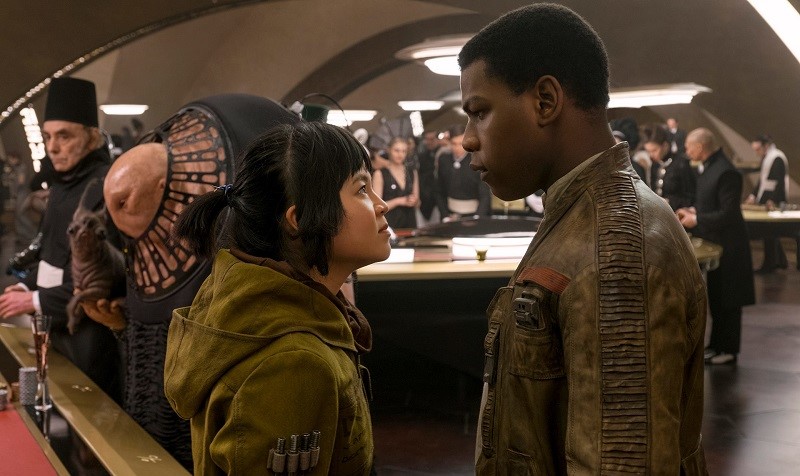
Rey’s storyline in Act Two confronts her with the unexpected, too: she forges connections with Luke and Kylo Ren, and neither man may be what he seems. Those connections begin the same morning: Rey wakes up to her first Force-conversation with Kylo, then heads to the cliff ledge to learn her first lesson about the Force from Luke. Rey and Kylo converse three more times, each leading to a different perspective on the events of the fateful night when Ben Solo destroyed Luke’s training temple. Luke shares his viewpoint on the hubris and failures of the Jedi Order, but not at first the whole truth about his failure with Ben, even when Rey insists she will not fail in Luke’s tutelage as Ben did. Her doubts about Luke, and her own desire for answers about her parents, lead Rey to the Mirror Cave, where she discovers for herself that the dark side does not in fact deliver on what it temptingly offers. When she touches his hand, Rey believes she sees the truth about Kylo, only to have Luke break the connection and demand that she leave. Rey does not give up so easily, chasing Luke down and compelling him to defend himself in single combat before he finally admits the truth of the past. Though he insists she is wrong about Ben, Luke once more refuses to take up his old saber to oppose Kylo. Only after she has flown away in the Falcon does Luke himself learn one final lesson from Master Yoda. But Rey has passed through her Ordeal of conflict with her teacher – and has claimed a Reward that he does not yet realize: her spiritual understanding of the Jedi way, and her literal absconding with the sacred Jedi texts.
When it moves into Act Three, The Last Jedi offers the intercutting plotlines familiar to the culmination of a Star Wars saga film. In Episode VIII the Road Back is brief: Rey departs Ahch-To and delivers herself to the Supremacy; Finn and Rose make contact with Poe as they hurry through hyperspace from Canto Bight, hoping to arrive in time to save the fleet. The frenetic events of the Climax unfold in three storylines: Finn and Rose infiltrating the Supremacy, Poe’s mutiny on the Raddus, and the showdown in Snoke’s throne room. As is traditional for Star Wars, all three plotlines go badly: Finn and Rose are captured before they can deactivate the tracker, Poe is stun-blasted by Leia and the transports depart the flagship, and Snoke extracts the location of Luke from Rey’s mind before telekinetically restraining her for execution by his apprentice. Even worse, all three reach their lowest ebb simultaneously. DJ has sold out the Resistance to save himself, and Phasma orders the execution of Finn and Rose. As Leia reclaims the beacon, she and Poe watch in horror while the transports are blasted away one by one. Rey learns she was wrong about her interpretation of the ramifications of Kylo’s turn against Snoke.
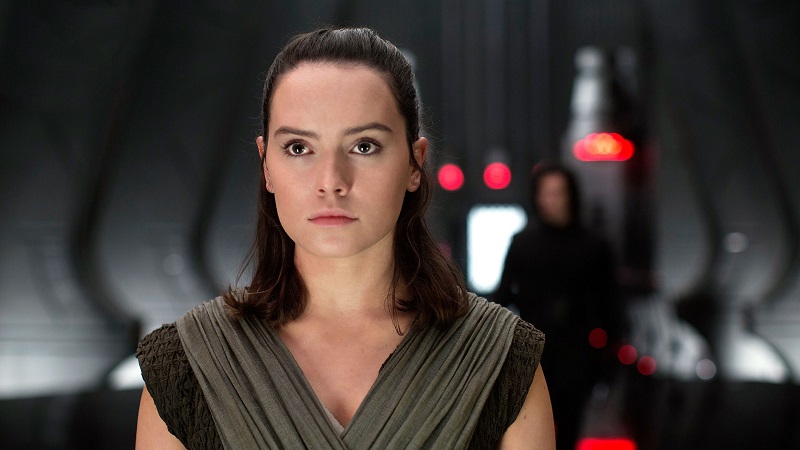
The Last Jedi fulfills this Act Three pattern, too, because the heroes are able to snatch victory from the jaws of defeat. Finn overcomes Phasma in single combat, and BB-8’s ingenuity helps save him and Rose. Holdo’s self-sacrifice saves the remaining transports and inflicts terrible damage to the Supremacy and the First Order fleet. Rey rejects Kylo’s offer to join him. As these scenes conclude, all of the primary characters have completed their character arcs for the film: Poe has learned the true meaning of heroic leadership, Finn has accepted his destiny as rebel scum, Rey has chosen the light side and the path of the Jedi – and Kylo Ren has chosen not redemption or atonement, but villainous command as the new Supreme Leader.
These events reach their apex just shy of two hours into the film. If the Canto Bight and Ahch-To sequences had not been trimmed, as confirmed to /Film and Collider in anticipation of home-video deleted scene content, the timing likely would have been closer to two hours and ten minutes – almost exactly the point where the previous saga films have transitioned from their Climax to the Denouement. In The Last Jedi, this likely would have involved something like a short scene with the remaining Resistance transports escaping to fight another day and reuniting with Rey at a rendezvous point. The final scene on the Falcon could stay basically unchanged, except for moving Rey’s embrace of Finn to the freighter from the Crait crevasse, with happy reunions among the characters followed by Leia offering reassurance about the future to Rey. This is how a Star Wars saga movie traditionally ends, with a Denouement minutes after reaching the Climax in the protagonists’ storylines.
And yet The Last Jedi has another half hour of story remaining.

Here Episode VIII’s structure progresses into Act Four, consisting of the events that take place on Crait. Two exciting set-pieces mark this stage: the red-and-white ground battle as the First Order marches onward toward the massive shield door of the old Rebel base, and the two-man showdown between a saddened master and his fallen apprentice. In terms of character arcs and thematic development, though, Act Four is about only one individual: Luke Skywalker.
The opening crawl of The Last Jedi establishes that Leia and the Resistance are counting on the return of the legendary Jedi Master, none other than Luke Skywalker himself, to once again inspire a spark of hope in the galaxy. Back in Act Two on Ahch-To, Luke had explained to Rey why he believed his failures meant that he could never live up to being the legend the galaxy wanted him to be. But failure, Yoda had admonished him, is the greatest teacher, and the true burden of a master is watching one’s students grow beyond the need for further teaching. While Act Three unfolds with the primary characters, alone on the island Luke finally has unlearned the last impediment to his mastery of the Jedi way.
Luke chooses to become the spark, the legend, that the galaxy needs. First, though, he says a private farewell to his sister. He apologizes to Leia, face to face, for his failure in training Ben. He hands her a manifestation of Han’s dice from the Falcon, reminding her that no one is ever truly gone. Then he marches out to face his former apprentice, where all the soldiers of the Resistance and the First Order bear witness to his myth come true. Once more in words apparently only heard between the two of them, he tells Kylo Ren the truth: he has not come to save Kylo’s soul; he is sorry for failing Ben; and, just like Han’s death, Kylo’s vengeance in the dark side will only mean that Luke will always be with him. In final words surely meant to echo Kylo’s father, the Jedi Master departs the battlefield with a haunting farewell: “See you around, kid.”
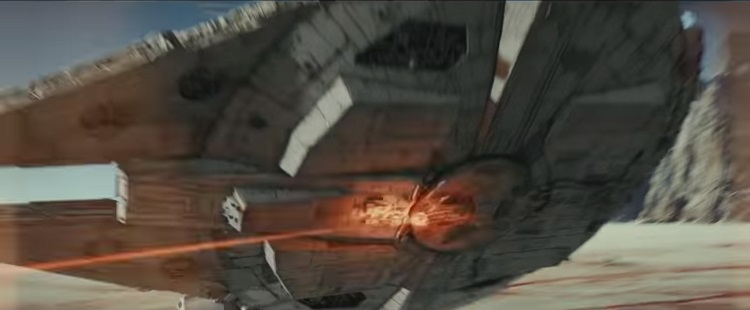
For the primary characters of The Last Jedi, however, Act Four does not offer further progress in their character development. Once at the Crait base, Poe shows that he has learned to lead wisely: initially planning to wait for help to arrive, ordering the ski speeders to retreat when their success is impossible, and recognizing that Luke is stalling for time to allow the others to escape. Finn has chosen his heroic path, a selfless commitment to the survival of the Resistance over selfish personal survival: to fight the battering ram cannon to buy time for allies to arrive, to sacrifice his own life to destroy the machine, and to help Luke Skywalker even if it also means suicidally taking a stand against the entire massed First Order invasion. Though his self-control remains unstable, Kylo Ren has committed to the dark side and his “kill the past” quest for power: he orders the destruction of the Falcon, his father’s ship, commands the no-prisoners annihilation of the Resistance, his mother’s legacy, and tries twice to accomplish the death of Luke Skywalker, his uncle. Likewise, Rey has committed to the light side and the Jedi path. Her role is to protect others, not to take the lead in the fight: she uses the Falcon’s as a diversion to draw the TIEs away from the speeders, follows the beacon in pursuit of rescuing the survivors, and uses the Force to lift the rocks and clear a path from the base’s tunnels. And then, as the events on Crait come to an end and she feels Luke’s death in the Force, Rey literally and metaphorically closes the door on Kylo Ren.
With Act Four concluded – Luke’s arc resolved and the other characters’ arcs reaffirmed – The Last Jedi finally reaches the Denouement scenes. Aboard the Falcon, the remainder of the Resistance shares the joy of surviving to fight another day. Rey reunites with Finn and BB-8, and meets Poe. Finn cares for the injured Rose. Leia and Rey grieve for Luke, yet are comforted both in the “peace and purpose” of his sacrifice and in Leia’s confident assurance that “we have everything we need” for the Resistance and the Jedi to endure.
The final sequence, an Epilogue, connects the thread from the opening crawl to the Resistance mission at Canto Bight to the Battle of Crait. Luke’s sacrifice has worked. The galaxy’s spark of hope, which Leia feared had been extinguished when no allies came to the aid of the trapped freedom fighters on Crait, has been reignited. The fathier stable boy, now wearing Rose’s ring with its hidden Resistance logo, hears the newest legend of Luke Skywalker. Like Ezra Bridger of Lothal in Star Wars Rebels – and, The Last Jedi seems to say, Rey of Jakku – Temiri Blagg of Canto Bight is strong in the Force, and he looks to the stars where, as Luke scolded Kylo Ren, the war has only just begun.

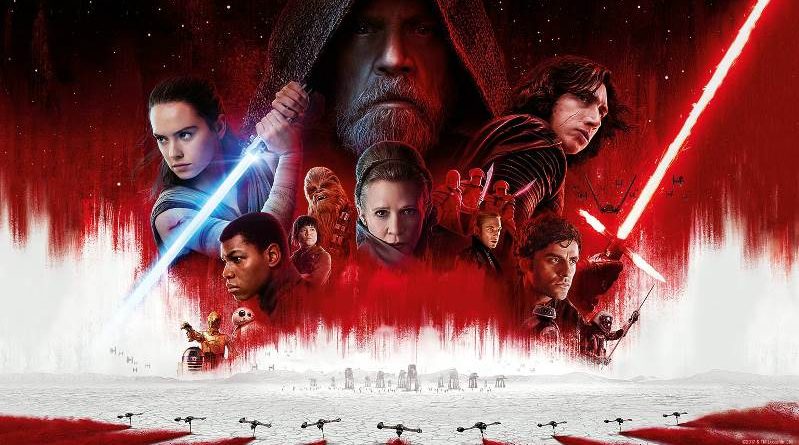







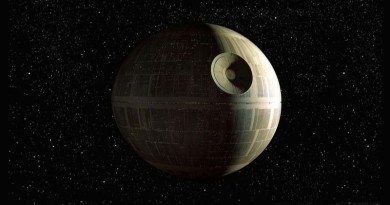


Pingback:Leia Organa: Leader of the New Jedi Order – FANgirl Blog
To read the film as a whole, I think a 3 act structure is still the more natural coice.
I’m mixing Field with Campbell. If we look at Rey as Campbell’s hero, her fight with Kylo can be seen as her Ordeal (in Syd Field terms still the second act) leading up to the Seizing of the sword (here, almost literally half a Lightsaber – and her now proven determination to be good). With it, she returns to fight with the rest of the Resistance. Though, alongside with them, she encounters one last challenge, the need for a last push in order to return with the Elixir (= a new spark of hope for the Resistance). The escape to Crait would be the Road back/second plot point and everything happening on there a sort of communal Third Act with Luke’s intervention – his own last Ressurection as a heroic Jedi – overtowering everyone’s personal Ressurections and Climaxes.
Rey’s Ressurection is represented by her lifting the rocks to save the trapped Resistance members. It’s her most powerful use of the force, yet. The “lifting stones” lines is a reference to the lessons she got from Luke. This underlines the fact that this the point where she needs to use all her learnings to save the day. Typical Climax stuff.
It’s impact and the way it is staged is clearly subordinated to the stand off between Kylo and Luke. Luke’s Climax is the more important one. It is one key character’s true conlusion – while Rey’s journey a Jedi, in a sage spanning sense, hast just begun.
Pingback:The Last Jedi and the Hero’s Journey – Part One: Rey – FANgirl Blog